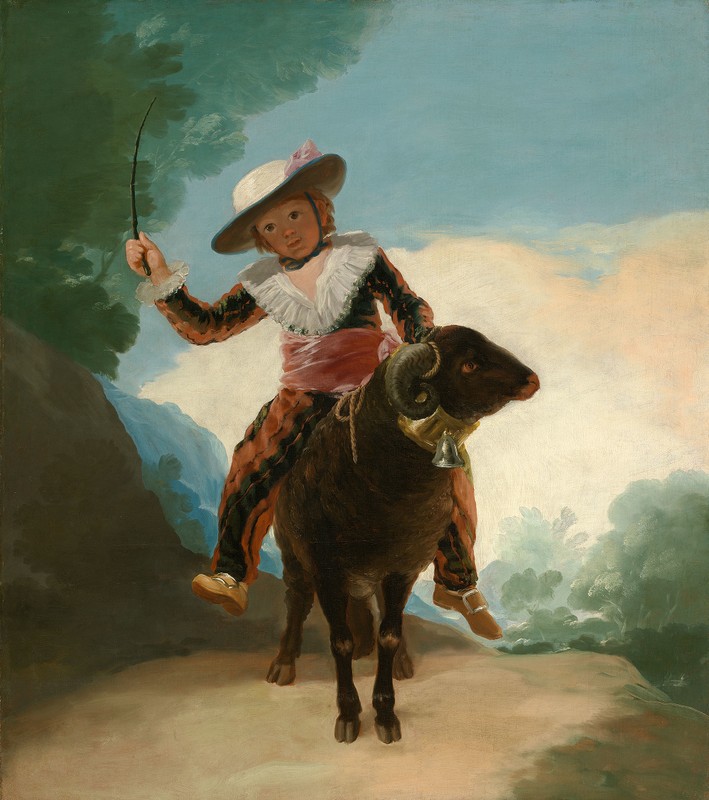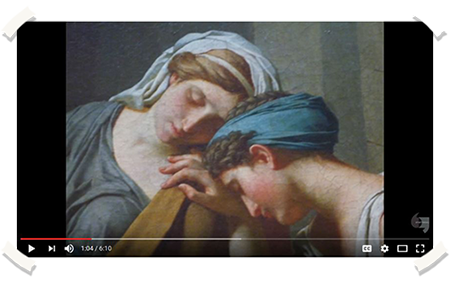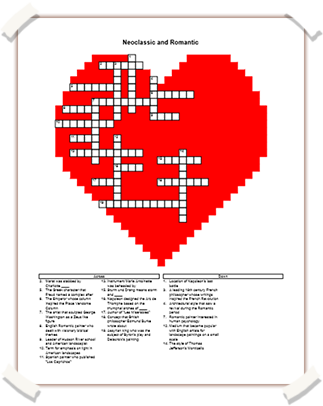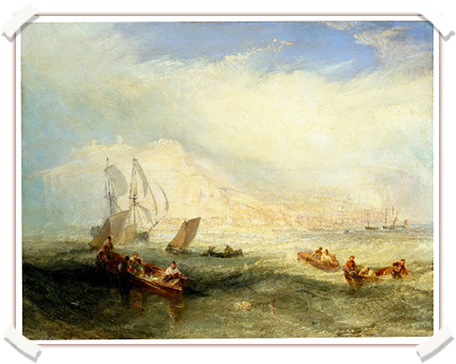Week 4
Neoclassicism and Romanticism

Neoclassicism was the result of a continuing interest in all things "Classical." Excavations of Roman cities in 1709 (Herculaneum) and 1748 (Pompeii) reminded people of the value of ancient history. Greek mythology became a popular subject in painting and sculpture, while Classical elements such as pediments, columns, and domes dominated architecture. Neoclassicism was a grand, noble style that inspired viewers of its art to be the same.
Romanticism wasn't just an art style; it was an aesthetic that permeated politics, music, and literature. Even architecture had Romantic elements in its revival of historical styles like Gothic. The hallmark of romantic painting was emotion, displayed in such themes as insanity and man against nature. Dramatic subjects and poses and bold colors conveyed climactic moments. Social commentary also reached new heights in the work of Delacroix and Goya. Landscape painting became a popular subject in Europe and especially America, where the land was untouched and untamed as settlers journeyed west.
Weekly Objectives
-
Examine works of art.
-
Investigate the meanings of the artworks encompassed by this period.
-
Distinguish one style from another and trace the stylistic development.
Activities
Readings
-
Adams: Art Across Time
-
Chapter 19: Neoclassicism: The Late Eighteenth and Early Nineteenth Centuries
-
Chapter 20: Romanticism: The Late Eighteenth and Early Nineteenth Centuries
Class Activities
Before posting on the discussion, visit the following websites:
-
William Hogarth published by The National Gallery.
-
Thomas Jefferson, a Brief Biography, published by monticello.org.
-
Rooms and Furnishings published by monticello.org .
Activities
-
Discussion 4
-
Midterm Paper
Video Lecture: Jacques-Louis David’s Neoclassic Masterpieces
Select the play icon, or use the Enter key to watch the video.
A transcript of Jacques-Louis David’s Neoclassic Masterpieces video is available.
Review Sheet: Neoclassicism: The Late Eighteenth and Early Nineteenth Centuries
Chapter 19
Be familiar with these artists, works, or concepts:
-
Neoclassicism
-
Chronology: The French Revolution and Reign of Napoleon
-
Canova ‘s Cupid and Psyche
-
David and his Oath of Horatii and Death of Marat
-
Arc de Triomphe
-
Oedipus
-
Ingres and his Grande Odalisque
-
Jefferson and his Monticello
-
Greenough’s George Washington
Please note: This is not a comprehensive list of what will be covered on the quiz; it merely highlights the most significant works and concepts in the chapter.
Review Sheet: Romanticism: The Late Eighteenth and Early Nineteenth Centuries
Chapter 20
Be familiar with these artists, works, or concepts:
-
Romanticism
-
Media: Watercolor
-
Gericault and his Raft of the Medusa
-
The Salon
-
Delacroix’s Death of Sardanapalus and Liberty Leading the People
-
Goya and his Executions of the Third of May, 1808
-
Friedrich’s Two Men Contemplating the Moon
-
The Sublime
-
Constable’s Salisbury Cathedral from the Bishop’s Garden
-
Turner
-
Cole
-
Bierstadt
Please note: This is not a comprehensive list of what will be covered on the quiz; it merely highlights the most significant works and concepts in the chapter.
Timeline for Neoclassical and Romantic Art
Let's take a quick recap of Neoclassical and Romantic art.
Select each time period to learn more about the events.
1780 - 1790
1790 - 1800
1800 - 1810
1810 - 1820
1820 - 1830
1830 - 1840

You can also download a Word version of Timeline for Neoclassical and Romantic Art.
Optional Learning Resources
Select the bottom right corner of the album, and drag towards the left, like you would turn pages of a book.
Optional Learning Resources Week Four
Watch the Spotlight Video;David, Oath of the Horatii, a video analysis of David's works.

Solve the Neoclassic and Romantic crossword puzzle.
Once done, you can view the answers here.

Select the link to the Google Art and Culture page and view Joseph Mallord William Turner's works at the Tate, Britain.

Artists' Corner
- Romanticism is known for its deep, vibrant colors.
- Watch the step by step instructions for drawing rolling dice.
- Then go to Kleki and try it out yourself. Make sure you change the colors!
You can also download a Word version of Optional Learning Resources Week Four.